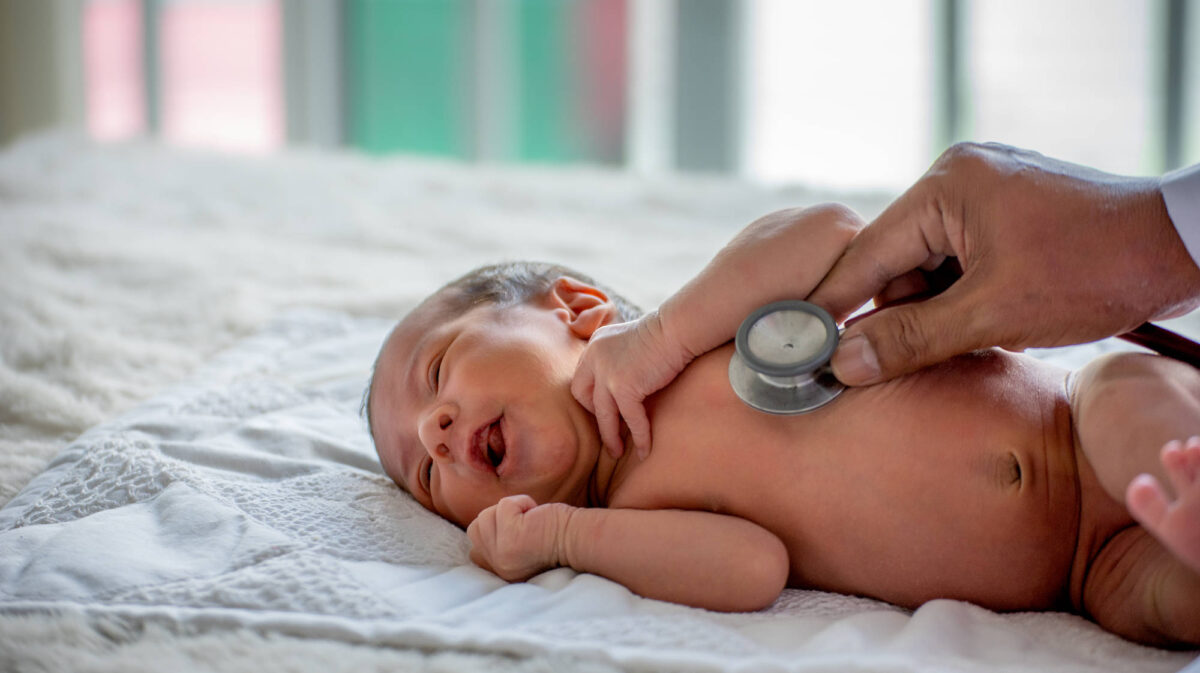How COVID-19 Affects Obstetric & Pediatric Care

The recent outbreak of severe acute respiratory syndrome coronavirus (SARS-CoV-2) and the associated disease COVID-19 raises many concerns about disease transmission and safety. Special considerations must be made in the case of pregnancy, when the immune system is compromised, and in the case of infancy, when the immune system is developing. Studies of infected patients indicate variations in disease severity based on age and other health factors. Therefore, anesthesiologists must take into account the role that anesthesia plays in patients with respiratory infections, especially with the ongoing global pandemic.
SARS-CoV-2 is a novel coronavirus; it seems to infect children just as frequently as it infects adults. However, children are less likely to be symptomatic. Early data across multiple studies in China have shed some light on the epidemiology of COVID-19. Of 333 children positive for SARS-CoV-2, about 35% reported no symptoms; symptomatic children most commonly reported cough, fever, and pharyngitis. Some infected children tested positive with nasopharyngeal swabs before symptom onset and others had false negative results. Radiology found mild abnormalities, which may include unilateral or bilateral infiltrates on chest radiograph and ground-glass opacities with surrounding halo on computer tomography. The virus remains active for nearly a month; consecutive sampling showed respiratory samples that remained positive for up to 22 days and stool samples that remained positive for over 30 days. Additionally, two studies found that up to 79% of children are co-infected, most commonly with influenza A or B or mycoplasma[1]. Proper diagnostic testing for pediatric patients is critical before scheduling procedures involving general anesthesia. Since the common source of infection for children is an infected person in the home[2], the status of family members should also be taken into consideration.
In pregnant women, SARS-CoV-2 infection can lead to preterm delivery and can negatively impact the fetus. Case studies conducted in and around Wuhan, China observed complications in a total of 63 infected women. Of the 63 cases: 38% of women delivered preterm, 32% of them experienced fetal distress, and 18% of babies experienced respiratory distress or pneumonia. Of the 65 newborns, 2 died from perinatal complications. Surprisingly, a total of 6% of neonates tested positive for SARS-CoV-2, despite reports of strict protocols for sanitation; newborns that tested positive were not among the ones that died. One mother passed on immunoglobulins M and G against the virus onto her triplets, who were tested at birth[1], opening up the possibility that pregnant women can pass this infection and the associated antibodies to their fetus .
It must be noted that COVID-19 differs from the common cold, which comes from infection with one of four seasonal coronaviruses: HCoV2-229E, HCoV2-HKU1, HCoV2-NL63, and HCoV2-OC43. One review [3] drew attention to a large study on the common cold [4] in infants and compared the outcomes with a recent study on COVID-19 [5] in the same age group. Children infected with SARS-CoV-2 were far less likely to have symptoms and less likely to die from infection, when compared to children with the common cold or the flu [3]. Clinical presentation of coronavirus infection overlaps with that of influenza infection, with a wide range of symptoms, from sore throat and runny nose to bronchitis and pneumonia. Another large-scale prospective study of individuals with common cold showed that up to 41% tested positive for co-infection and up to 72% were immunosuppressed [6]. Whether infected with common strains or a novel strain, those with multiple infections were most likely to experience symptoms and to progress to severe disease.
For anesthesiologists, the frequency of infection in children throughout the year presents a challenge, whether the infection is from SARS-CoV-2, a common coronavirus, or influenza. Research over the last few decades indicates that anesthesia should be avoided in pediatric patients that have had a recent viral respiratory infection; risk of complications and critical incidents increases with history of cold symptoms[7]. Anesthesia can negatively impact immune function, which may increase risk of disease progression in infected individuals. Current obstetric and pediatric patients should be evaluated thoroughly to determine if and when patients may be anesthetized safely.
- Zimmermann, Petra MD, PhD*,†,‡; Curtis, Nigel FRCPCH, PhD†,‡,§ COVID-19 in Children, Pregnancy and Neonates: A Review of Epidemiologic and Clinical Features, The Pediatric Infectious Disease Journal: June 2020 – Volume 39 – Issue 6 – p 469-477 doi: 10.1097/INF.0000000000002700
- Zimmermann P, Curtis N. Coronavirus Infections in Children Including COVID-19: An Overview of the Epidemiology, Clinical Features, Diagnosis, Treatment and Prevention Options in Children. Pediatr Infect Dis J. 2020;39(5):355-368. doi:10.1097/INF.0000000000002660
- Vanhems, Philippe MD, PhD; Endtz, Hubert MD; Dananché, Cédric DrPharm, PhD; Komurian-Pradel, Florence PhD; Sanchez Picot, Valentina DVM; For the Pneumonia Study GABRIEL members* Comparison of the Clinical Features of SARS-CoV-2, Other Coronavirus and Influenza Infections in Infants Less Than 1-Year-Old, The Pediatric Infectious Disease Journal: July 2020 – Volume 39 – Issue 7 – p e157-e158 doi: 10.1097/INF.0000000000002705
- Picot VS, Bénet T, Messaoudi M, et al. Multicenter case-control study protocol of pneumonia etiology in children: Global Approach to Biological Research, Infectious diseases and Epidemics in Low-income countries (GABRIEL network). BMC Infect Dis. 2014;14:635. Published 2014 Dec 10. doi:10.1186/s12879-014-0635-8
- Wei M, Yuan J, Liu Y, Fu T, Yu X, Zhang Z. Novel Coronavirus Infection in Hospitalized Infants Under 1 Year of Age in China. JAMA. 2020;323(13):1313–1314. doi:10.1001/jama.2020.2131
- Gaunt ER, Hardie A, Claas EC, Simmonds P, Templeton KE. Epidemiology and clinical presentations of the four human coronaviruses 229E, HKU1, NL63, and OC43 detected over 3 years using a novel multiplex real-time PCR method. J Clin Microbiol. 2010;48(8):2940-2947. doi:10.1128/JCM.00636-10
- Jacoby DB, Hirshman CA. General anesthesia in patients with viral respiratory infections: an unsound sleep?. Anesthesiology. 1991;74(6):969-972. doi:10.1097/00000542-199106000-00001